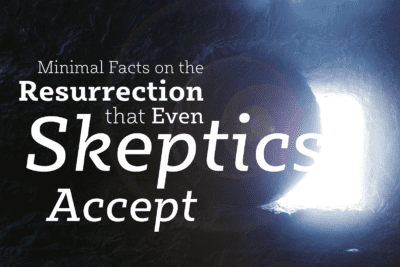By Dr. Hugh Ross,
For a kid in Canada, snow meant snowball fights. After watching several of these battles from a safe distance, I figured out the key to winning—the design and sturdiness of one’s snow fort. Therefore, while other kids in our neighborhood tried to make the best snowballs, I experimented with my fort’s design.

Using various kinds of snow, I built walls then tested them to see how intense a snowball fusillade they could withstand. I soon found out that snow fort strength depends on three factors: the average size of falling snowflakes, the atmosphere’s humidity, and the ambient temperature. When conditions weren’t optimal, I stayed inside and read. However, when nature cooperated, I went outside to build a sturdy structure, provoke an attack, and then retreat to my fort and stash of ammunition.
Constructing a good model to explain the origin and history of the universe and life also requires a well-built structure that can withstand attacks. While the Bible is not a scientific textbook, it contains a great quantity of information about the origin, structure, and history of the universe and life—more than any other religious text. These descriptions also uniquely predict scientific discoveries thousands of years ahead of time. Furthermore, the Bible frequently exhorts readers to discover the Creator’s handiwork in nature, referring to it as a second and complementary revelation from him.
This surpassingly abundant commentary on the natural realm makes the Bible the best possible choice on which to erect a creation model—one that is scientifically testable. Far from being just another ancient Near Eastern creation myth, the account of the six creation days in Genesis 1, Job 38–39, Psalm 104, and Proverbs 8 offers a sweeping, plausible creation narrative. Its structure even reflects the classic scientific method. A well-grounded creation model rests upon four cornerstone inferences from Scripture.
- Dual revelation: The Creator’s attributes (truth, love, wisdom, power, etc.) ensure the harmony of his creative works (nature) with his verbally inspired Word (the Bible).
- Creation purposes: Nature fulfills the Creator’s stated and implied reasons for creating.
- Creation chronology: The Creator transcends creation; the realm of nature has a beginning and an end, a before and an after.
- Detectability of the divine: Close and careful study of nature’s record can reveal evidence of the Creator’s miraculous interventions.
These four inferences lay the foundation for every component of the testable creation model that my colleagues and I have developed at Reasons to Believe. Given their structural significance, the four cornerstones provide the context for understanding some of the most intriguing characteristics of creation. When we take the time to build a solid, plausible foundation for our creation model, we can demonstrate that the biblical creation story is more than a myth—it is the truth.

Dr. Hugh Ross will discuss the harmony between science and the Bible at this year’s AMP Conference, February 12–13, in Pomona, CA. Visit ampconference.com for more details.








